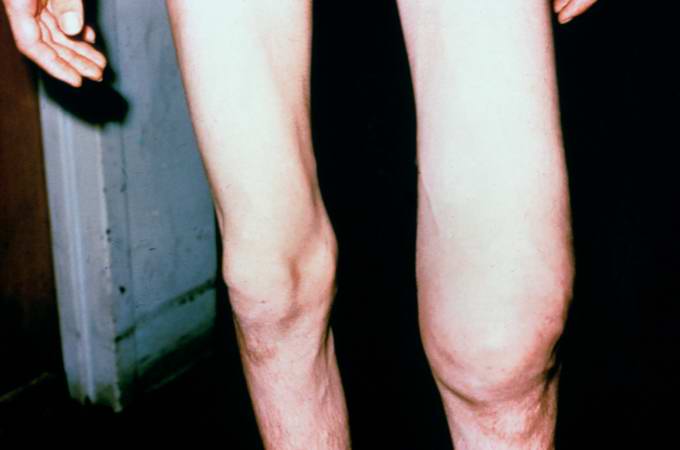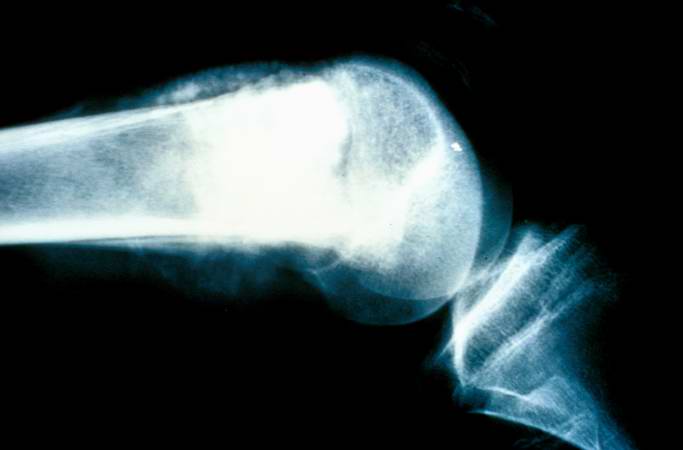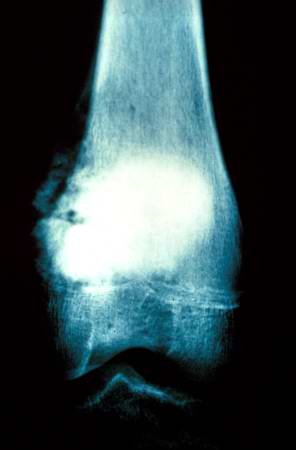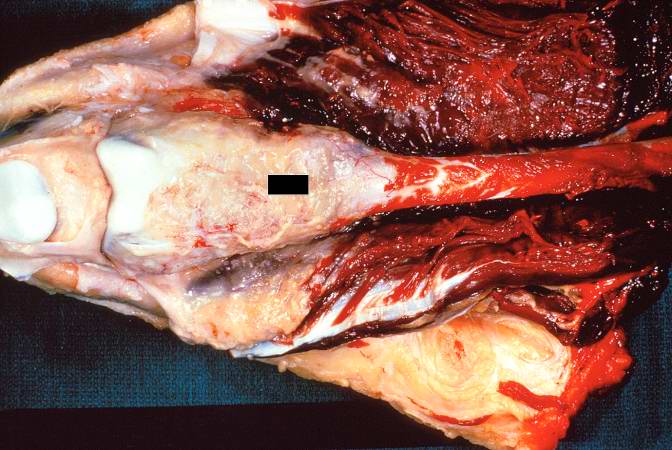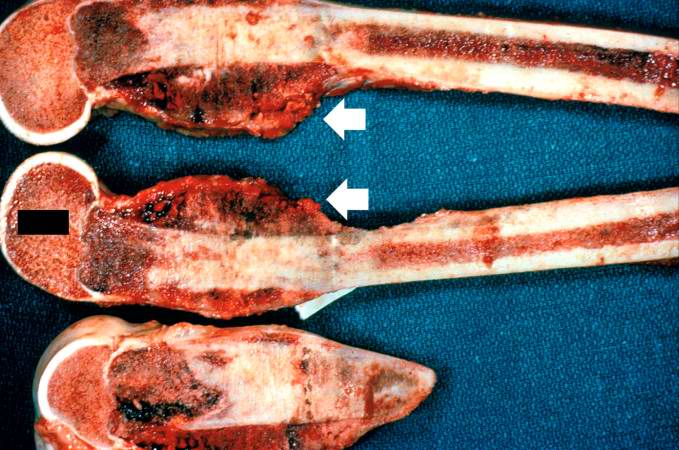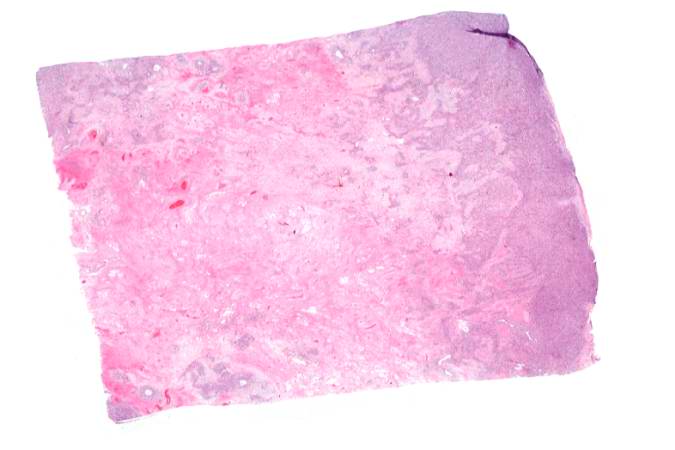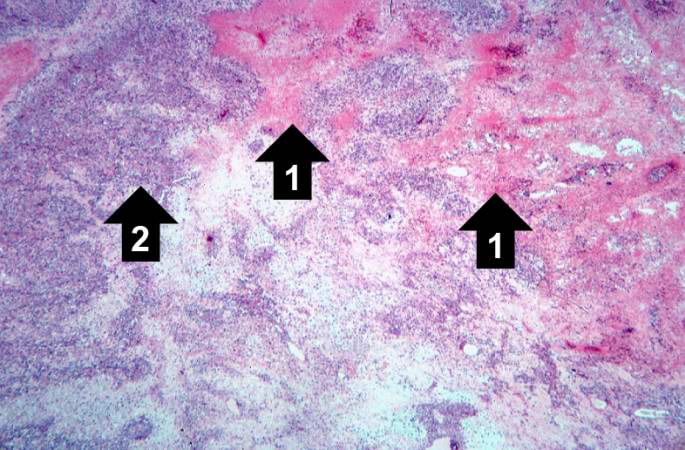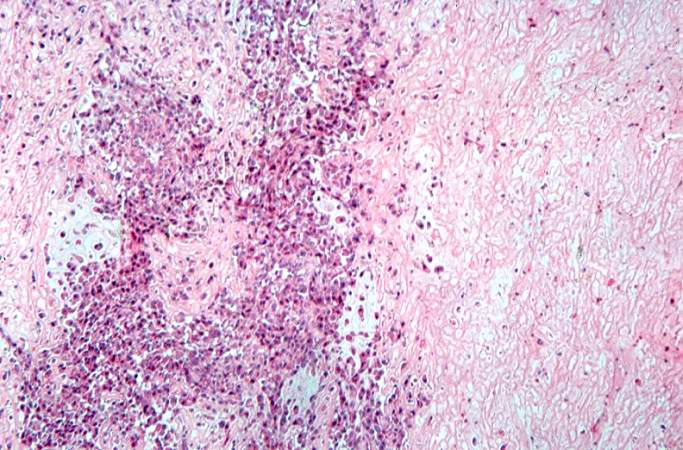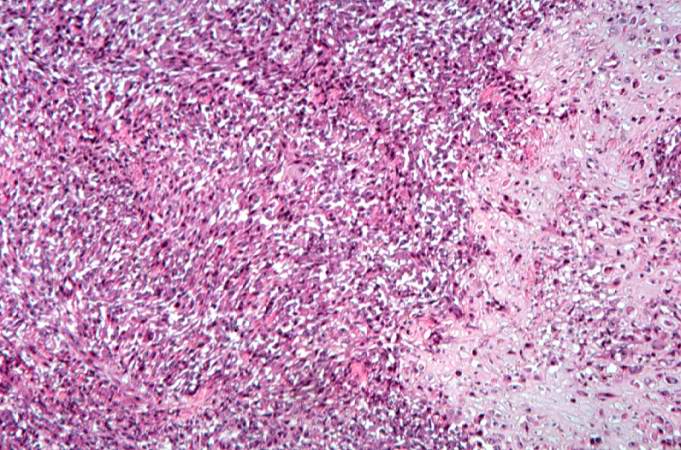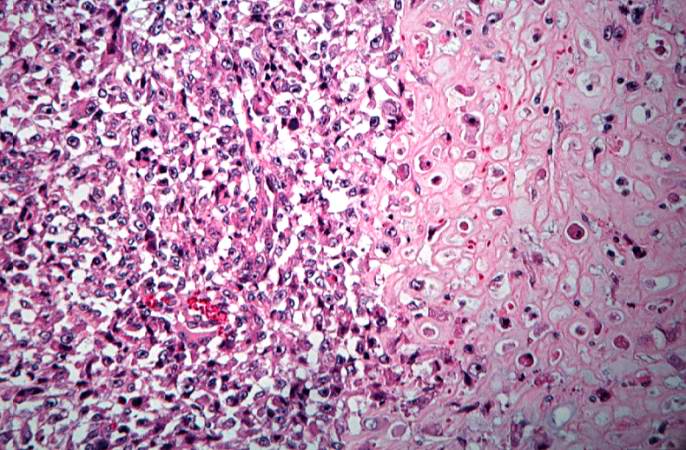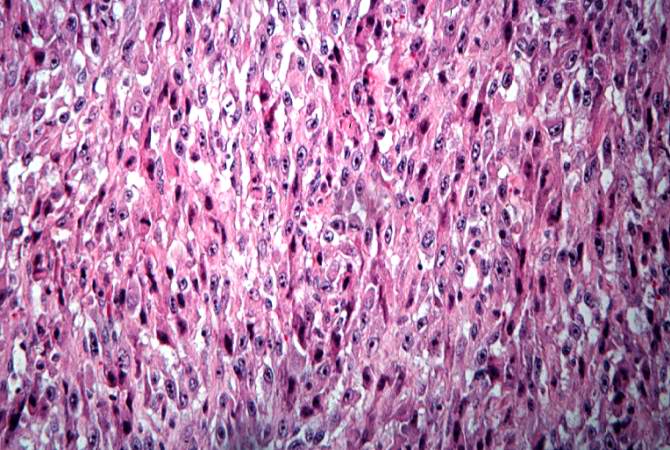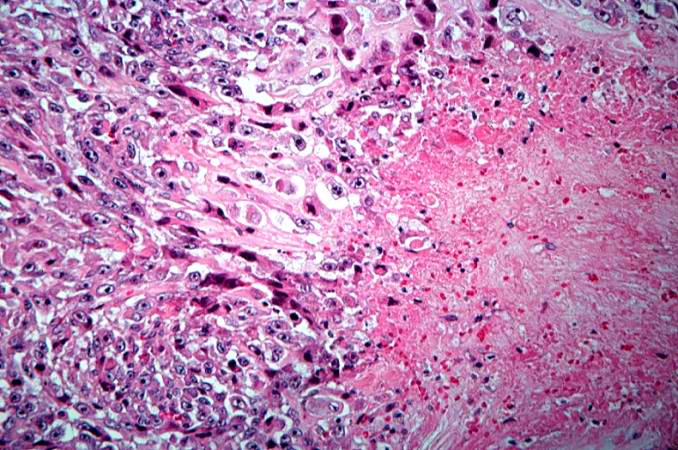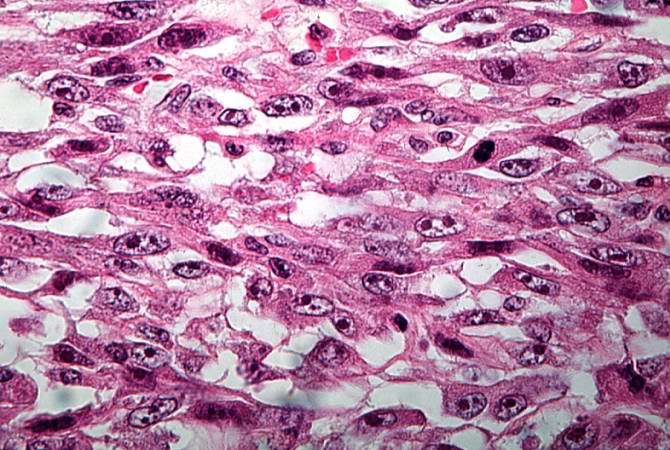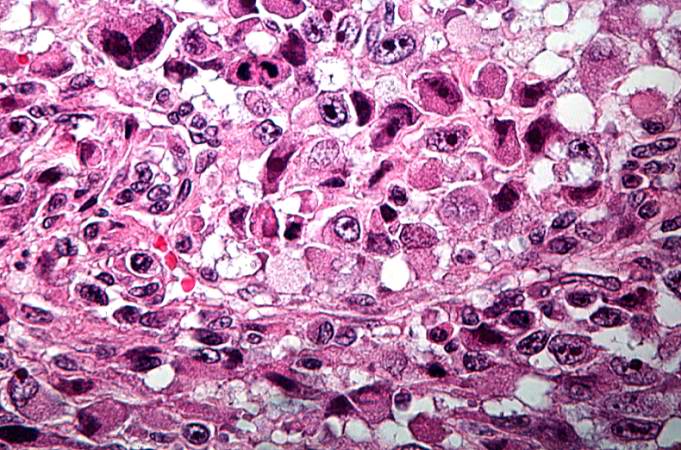Osteosarcoma overview: Difference between revisions
No edit summary |
|||
| Line 1: | Line 1: | ||
__NOTOC__ | |||
{{CMG}} | {{CMG}} | ||
{{Osteosarcoma}} | {{Osteosarcoma}} | ||
| Line 13: | Line 14: | ||
'''Osteosarcoma''' is the most common type of malignant bone cancer, accounting for 35% of primary bone malignancies. There is a preference for the metaphyseal region of tubular long bones. 50% of cases occur around the knee. It is a malignant connective (soft) tissue tumor whose neoplastic cells present osteoblastic differentiation and form tumoral bone. | '''Osteosarcoma''' is the most common type of malignant bone cancer, accounting for 35% of primary bone malignancies. There is a preference for the metaphyseal region of tubular long bones. 50% of cases occur around the knee. It is a malignant connective (soft) tissue tumor whose neoplastic cells present osteoblastic differentiation and form tumoral bone. | ||
==Case Examples== | ==Case Examples== | ||
Revision as of 13:22, 10 September 2012
Editor-In-Chief: C. Michael Gibson, M.S., M.D. [1]
|
Osteosarcoma Microchapters |
|
Diagnosis |
|---|
|
Treatment |
|
Case Studies |
|
Osteosarcoma overview On the Web |
|
American Roentgen Ray Society Images of Osteosarcoma overview |
Overview
Bone cancer is a malignant (cancerous) tumor of the bone that destroys normal bone tissue (1). Not all bone tumors are malignant. In fact, benign (noncancerous) bone tumors are more common than malignant ones. Both malignant and benign bone tumors may grow and compress healthy bone tissue, but benign tumors do not spread, do not destroy bone tissue, and are rarely a threat to life.
Malignant tumors that begin in bone tissue are called primary bone cancer. Cancer that metastasizes (spreads) to the bones from other parts of the body, such as the breast, lung, or prostate, is called metastatic cancer, and is named for the organ or tissue in which it began. Primary bone cancer is far less common than cancer that spreads to the bones.
There are three types of bone cancer:
- Osteosarcoma - develops in growing bones, usually between ages 10 and 25
- Chondrosarcoma - starts in cartilage, usually after age 50
- Ewing's sarcoma - begins in nerve tissue in bone marrow of young people, often after treatment of another condition with radiation or chemotherapy
Osteosarcoma is the most common type of malignant bone cancer, accounting for 35% of primary bone malignancies. There is a preference for the metaphyseal region of tubular long bones. 50% of cases occur around the knee. It is a malignant connective (soft) tissue tumor whose neoplastic cells present osteoblastic differentiation and form tumoral bone.
Case Examples
Case #1
Clinical Summary
This 14-year-old white male first experienced mild pain in the left knee after playing baseball, approximately two months prior to admission. The pain persisted in an intermittent fashion, and was described as being somewhat worse at night. Approximately two weeks prior to admission, the pain increased significantly and was accompanied by marked swelling and loss of considerable motion of the knee joint. These symptoms were accompanied by a history of decreased appetite, lethargy, and a 10-pound weight loss. On physical examination, the left knee was enlarged diffusely, firm, and non-tender. Following biopsy, the patient was subjected to surgical removal of the distal femur and knee with placement of a prosthetic knee joint and bone grafts.
Autopsy Findings
The distal diaphysis of the femur and adjacent soft tissues were involved in a 15 x 10 x 10-cm mass. The cut surface of the mass was fleshy white, with focal areas of hemorrhage.
Pathological Findings
